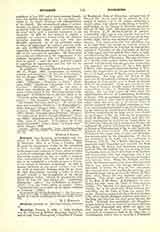

Bourasse, JEAN-JACQUES, archaeologist and historian, b. at Ste.—Maure (Indre-et-Loire), France, December 22, 1813; d. at Tours, October 4, 1872. He made his preparatory studies for the priesthood in Paris. In 1835, he taught the natural sciences at the preparatory seminary of Tours, where he began a course of archaeology that soon attracted attention. The results achieved by him in a field of research, then comparatively new, were such as to entitle him to be considered a veritable pioneer in France, of the science of Christian archaeology. In 1884 he became professor at the grand seminaire and held the chair of dogmatic theology there for six years. He then discontinued teaching in order to devote himself entirely to the preparation of his various archaeological works. Among the productions published by him the best known are: “Archeologie Chretienne” (1841); “Les Cathedrales de France” (1843); “Les plus belles eglises du monde” (1857); “Recherches hist. et archeol. sur les eglises romaines en Touraine” (1869).
M. J. WALDRON

